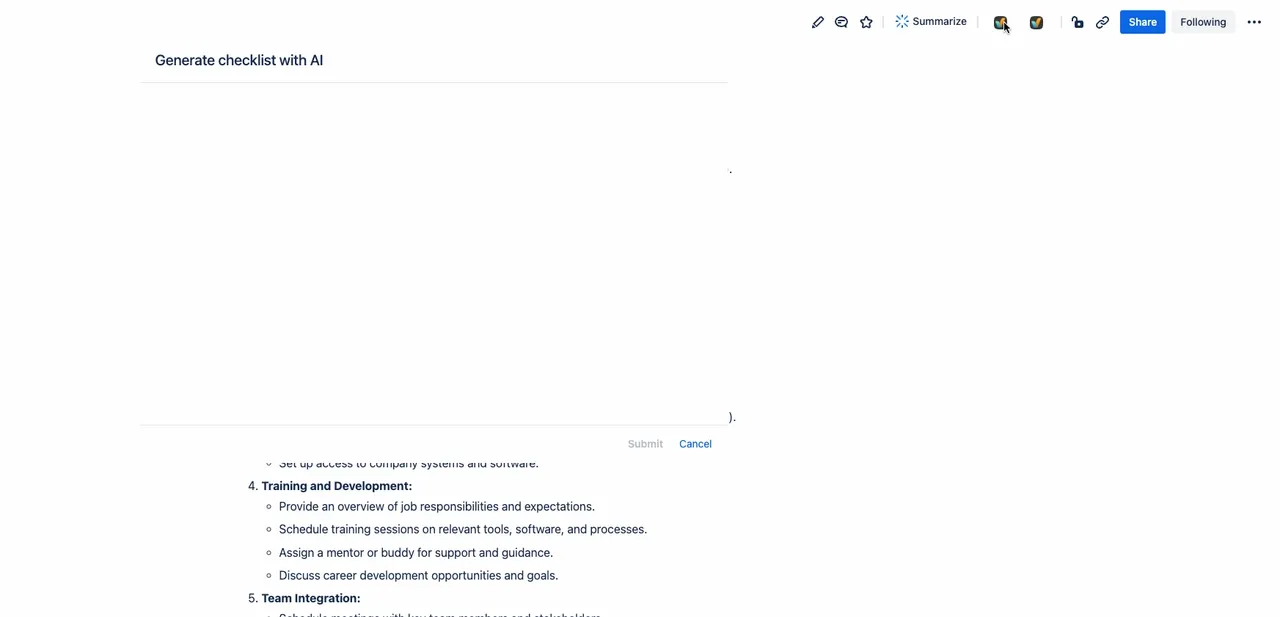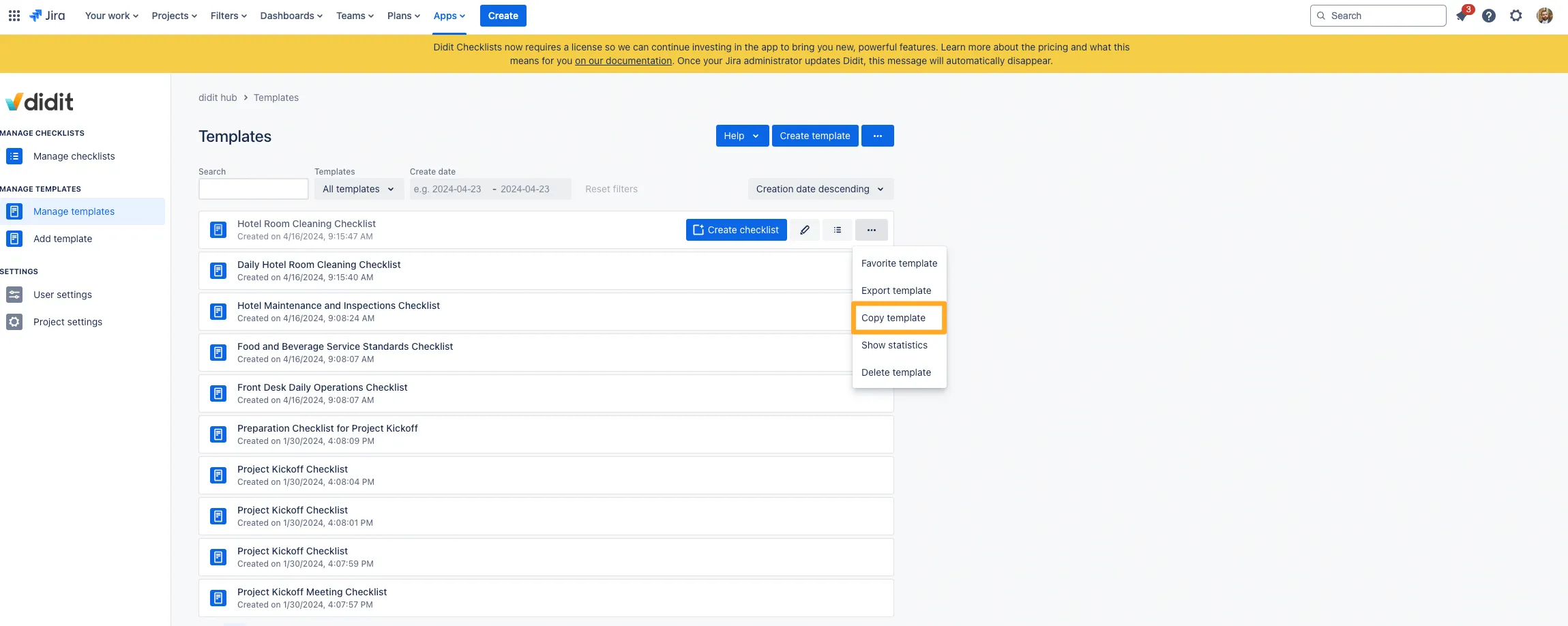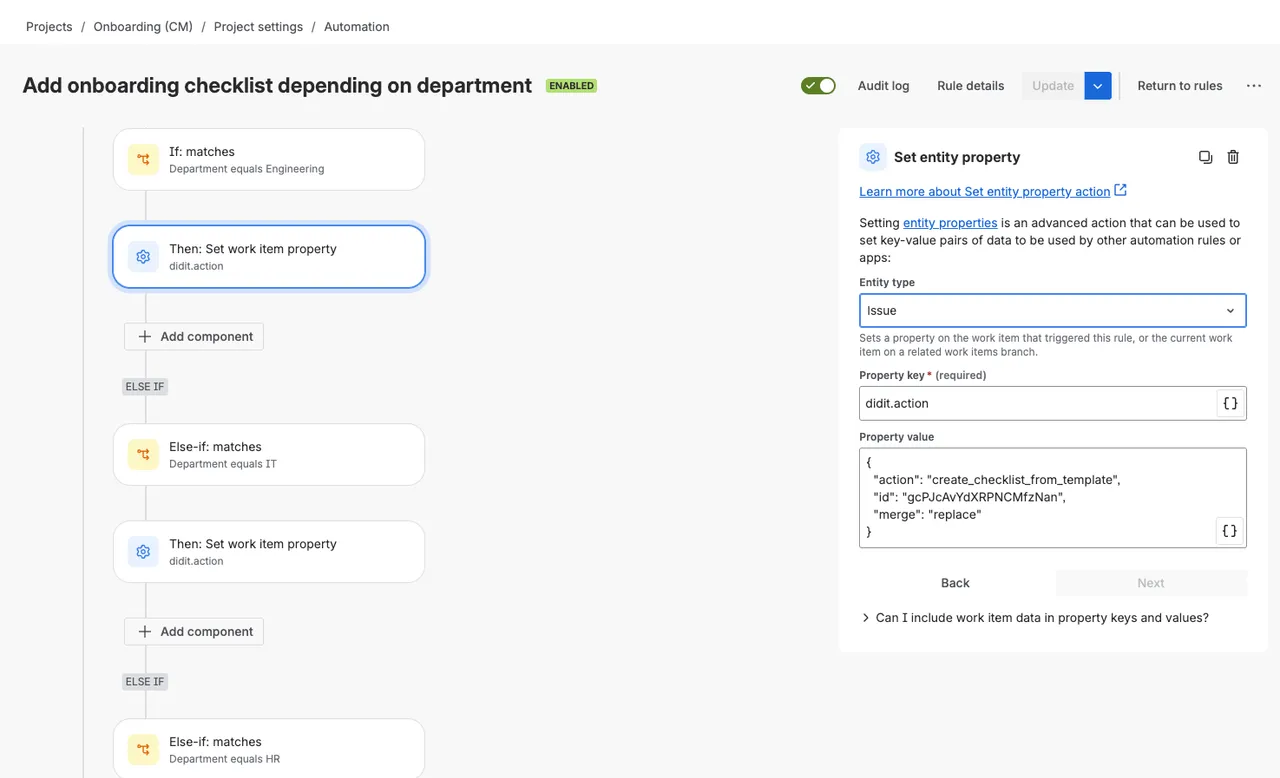Onboarding of Employees in Organizations
Every company needs to make a good first impression for people when they join. This is usually part of the hiring process called onboarding. So how can companies ensure they give a consistent and positive onboarding experience? Well, one way could be with checklists.
Onboarding checklist templates
If your HR team is already using Jira and/or Confluence to manage their onboarding process, Didit Checklists is a great fit to start honing and improving that process. You can choose to install our app for Jira, our app for Confluence, or both. If you are able to use both, the checklists from both systems will stay in sync.
Once you have the apps installed, navigate to the Didit hub at the top of Jira or Confluence to create or add your onboarding checklist. From here, you have a few options.
The first option is to create a new checklist template from scratch and add your own tasks. If you already have a streamlined onboarding process, it might make sense to do this. If you have the template in another document, it’s quite easy to bulk copy and paste the content into a new checklist.


The second option is to add the onboarding checklist template that comes with Didit. Go to “Add Templates” amd choose “Human Resources,” and you will see a predefined onboarding checklist template which you can use.


Finally, if you have your onboarding steps already defined in a Confluence page, you can use the Didit for Confluence app to generate a checklist from the page content.


No matter the option you choose, you can still edit your checklist once you are finished, so don’t worry about making mistakes or fielding more feedback for changes later.
Customized onboarding checklists
Now that you have a template for your onboarding process, you can decide whether this is sufficient for all newcomers or if you need different versions for different departments. A great aspect about Didit Checklists is that the templates are fully customizable. You could take the template that you created in our first part and edit it directly in a Jira issue to make it suit your newcomer.


In this sense, you can use the template you created above as a baseline and make edits depending on who you are onboarding. If you are going to use those edits more than once, it makes sense to add it as a template. If you are working in HR in a larger organization, it could make sense to copy the template you created above and create new templates with different tasks depending on the department. To copy a template, navigate to the Didit hub, hover over the template you would like to copy, click the ellipses menu, and select “Copy template.”


You could have an onboarding checklist for finance, IT, HR, legal, software, etc. All in all, it’s important to remember that Didit checklists are not stringent. They do not require you to follow the same process over and over again. You can customize each of your onboarding checklists to be slightly different for each hire, if you want.
Automating different checklists based on department
In a larger organization the process for onboarding employees could be different depending on what department the employee is joining. If someone is joining the engineering department, their onboarding process will be significantly different than someone joining the finance or legal department. In this case, no matter where your onboarding process kicks off (in a Jira software project or a Jira Service Management project), you will want to collect the “Department” as an input from whoever is creating the initial request. From there, you should use automation within Jira to add the correct onboarding template depending on which department the requestor selects. Instead of using labels in the page linked above, you would use your “Department” field. If you are having trouble with the JSON for each “Set entity property” action, consider using our automation wizard. In the end, your automation rule could look like this.


Real world onboarding checklist examples
Week 1 - Setup & Access
- Create company email and Slack accounts
- Set up development environment (IDE, Docker, local databases)
- Grant access to GitHub/GitLab repositories and code review tools
- Install VPN and security software
- Complete cybersecurity training and phishing simulation
- Set up time tracking and project management tool access
Week 2 - Code & Processes
- Complete first code review of existing codebase
- Set up local development of main application
- Attend architecture overview session with tech lead
- Review coding standards and contribution guidelines
- Complete first small bug fix or feature
- Set up monitoring and logging tool access
Week 3-4 - Integration
- Participate in sprint planning and daily standups
- Complete first meaningful feature or improvement
- Shadow on-call rotation procedures
- Review deployment and CI/CD processes
- Meet with cross-functional team members (Product, QA, DevOps)
Week 1 - Foundation
- CRM system setup and training (Salesforce, HubSpot, etc.)
- Access to sales collateral and presentation templates
- Product demonstration training with solutions engineer
- Review pricing structure and discount approval processes
- Complete compliance training (GDPR, industry regulations)
- Set up commission tracking and reporting tools
Week 2 - Product & Market
- Shadow 5 sales calls with senior team members
- Complete competitive analysis training
- Review ideal customer profile and buyer personas
- Learn objection handling techniques for common scenarios
- Access to proposal and contract templates
- Training on legal approval processes
Week 3-4 - Independence
- Conduct first solo discovery call with manager listening
- Complete first proposal with senior review
- Set up territory planning and account assignment
- Learn renewal and upselling processes
- Meet key customer success and support contacts
Week 1 - Brand & Tools
- Brand guidelines and asset library access
- Marketing automation platform training (Marketo, Pardot)
- Google Analytics and social media tool access
- Content management system permissions
- Review current campaigns and performance metrics
- Access to design tools and approval workflows
Week 2 - Strategy & Process
- Attend campaign planning and strategy sessions
- Review lead scoring and qualification processes
- Training on marketing-sales handoff procedures
- Access to webinar and event management platforms
- Review content calendar and publishing workflows
- Meet with creative and content team members
Week 3-4 - Execution
- Create first piece of content with senior review
- Set up first email campaign or social media series
- Learn A/B testing procedures and tools
- Review attribution and ROI tracking methods
- Participate in cross-department strategy meetings
Week 1 - Systems & Compliance
- ERP system access and training (SAP, NetSuite)
- Accounts payable/receivable system setup
- Banking and payment platform access
- Sox compliance and audit procedure training
- Expense management system setup
- Review chart of accounts and coding structure
Week 2 - Processes
- Month-end and quarter-end closing procedures
- Budget planning and variance analysis training
- Invoice approval and payment authorization setup
- Financial reporting template and deadline review
- Tax compliance and filing procedure training
- Vendor management and procurement process review
Week 3-4 - Analysis
- Complete first financial analysis project
- Review forecasting models and assumptions
- Participate in budget review meetings
- Learn business partnering responsibilities
- Set up regular reporting and dashboard access
Week 1 - Systems & Legal
- HRIS system access and training (Workday, BambooHR)
- Applicant tracking system setup
- Payroll system access and procedure review
- Employment law and compliance training
- Benefits administration platform access
- Background check and reference process training
Week 2 - Employee Relations
- Employee handbook and policy review
- Grievance and disciplinary procedure training
- Performance management system setup
- Training on compensation and leveling frameworks
- Employee engagement survey tools access
- Diversity and inclusion program overview
Week 3-4 - Strategic HR
- Participate in workforce planning sessions
- Review retention and turnover analytics
- Learn succession planning processes
- Training on change management methodologies
- Set up regular HR metrics reporting
Week 1 - Customer & Tools
- Customer support platform training (Zendesk, Intercom)
- Customer health scoring and analytics setup
- Product training with technical specialists
- Access to knowledge base and documentation
- Review customer onboarding procedures
- SLA and escalation procedure training
Week 2 - Relationships
- Shadow customer calls and check-ins
- Review customer success playbooks
- Training on renewal and expansion processes
- Learn churn prediction and prevention strategies
- Access to customer feedback and survey tools
- Meet key technical and support team contacts
Week 3-4 - Ownership
- Take ownership of first customer accounts
- Complete first customer health review
- Participate in quarterly business reviews
- Learn upselling and cross-selling techniques
- Set up customer success metrics tracking
Link to this page: https://seibert.biz/checklistsonboarding